In this final episode of Taa Moko Sessions, Justine Murray meets the two resident artists giving moko to the public from a new studio in the New Zealand Māori Arts and Crafts Institute, which is housed in the Rotorua tourist centre Te Puia.
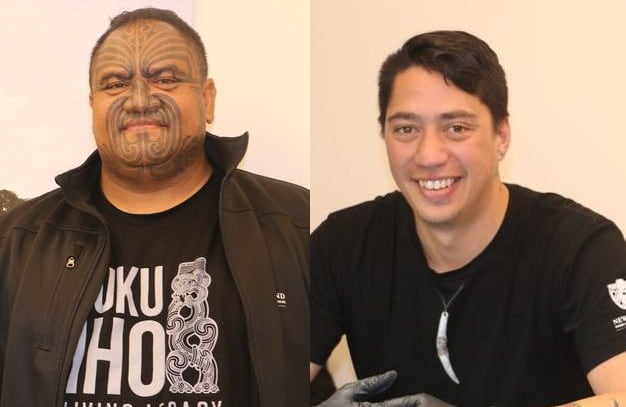
Moko artists Arekatera Maihi and Jacob Tautari Photo: RNZ / Justine Murray
Arekatera Maihi (Nō Ngati Whatua, Nga Puhi, Tainui) and Jacob Tautari (Ngai Tahu, Ngati Maniapoto, Ngati Hine) are both graduates of Te Wānanga Whakairo – the carving school at the NZ Maori Arts and Crafts Institute (NZMACI).
The pair talk about mixing chisels with tattoo guns and their personal views on giving moko to non-Maori.
Te Puia attracts up to 500,000 visitors each year.
On 14 June this year, NZMACI officially opened the tattoo studio there and now visitors can leave with a permanent souvenir in the form of a moko.
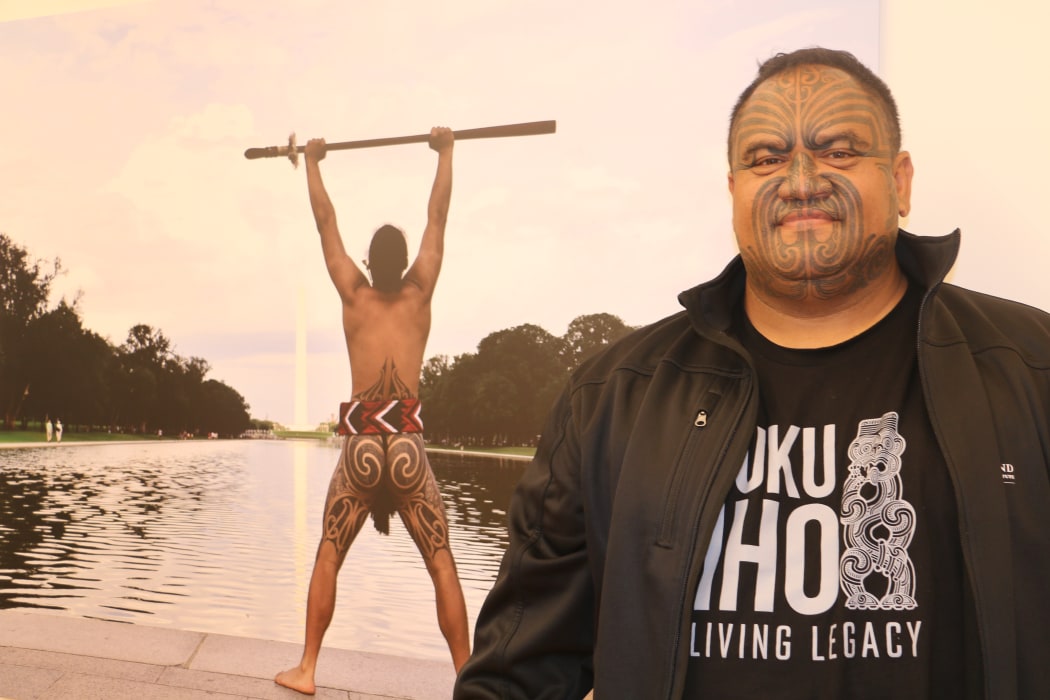
Arekatera Maihi graduated from the carving school in 2006, today he is head of the school. Photo: RNZ/Justine Murray
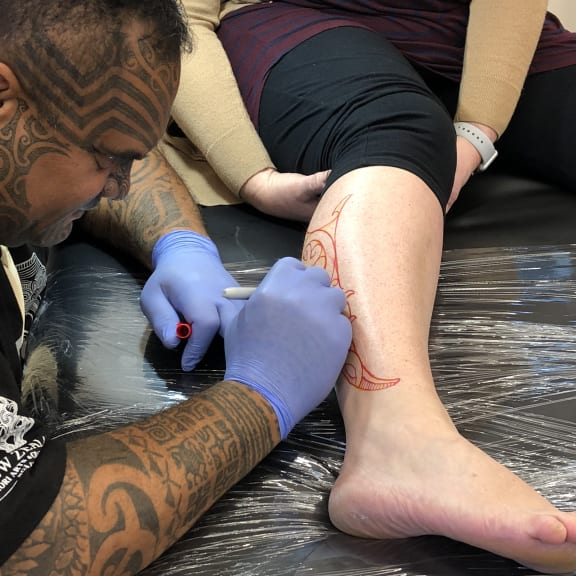
Arekatera Maihi is one of the moko artists at their moko studio at NZMACI. Photo: Supplied
Arekatera graduated from NZMACI in 2006 and decided to take a break from the chisel. He went on to learn moko in Opotiki.
“I thought it was important if I wanted to become a moko artist, I had to learn about whakairo because it would give you a good foundation.”
Jacob learned moko under the mentorship of Herewini Tamihana of Te Whariki Moko o Tokoroa and has worked as an artist for 11 years.
He studied at the carving school under that guidance of Tohunga Whakairo (Carver) Clive Fugill.
In 2013 Arekatera returned to the Institute to take up the position as head of the school.
The predecessor to NZMACI – Te Ao Marama – was established in Rotorua's Whakarewarewa Geothermal Valley in 1926 to foster all aspects of Māori culture.
Since 1927, students have travelled the country assisting in the building and carving of meeting houses.
Jacob recently spent nine months helping to carve a meeting house in the Southland town of Mataura.
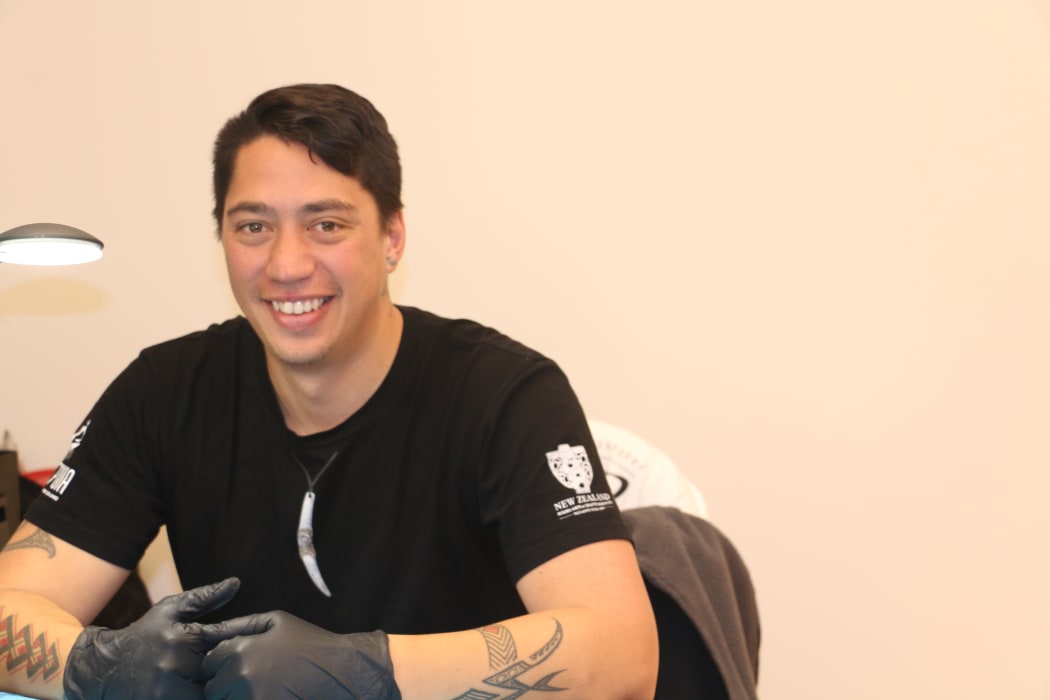
Jacob Tautari grew up in Invercargill and has called Rotorua home for the past eight years. Photo: RNZ/Justine Murray
Many of the meeting houses built in the 1950s now need repair and renovation work, says Arekatera, who was part of the carving team that worked on the Māori ancestral house Mataatua in Whakatane.
“I think our role has to change. [We need to] go back to those same marae and restore them. That practice needs to take place now and that’s a lot of the work we are going to do in the next 10, 20 years.”
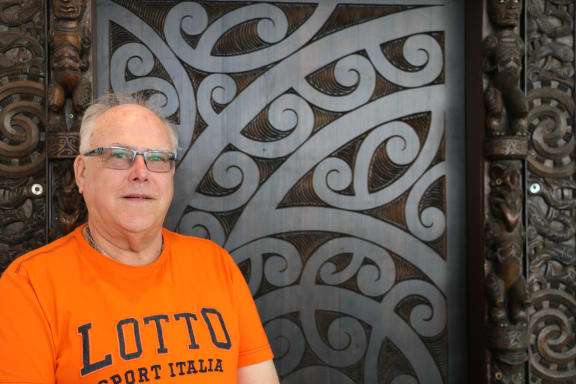
Tohunga Whakairo Clive Fugill. Photo: RNZ/Justine Murray
NZCMI offers courses in traditional and contemporary art forms, including stone and bone carving.
The weaving school Te Rito is headed by Edna Pahewa and in 2013 the waka building programme Te Wānanga a Kupe Mai Tawhiti was added.
The Māori art exhibition Tuku Iho – Living Legacy is largely the reason why a space for moko was made a permanent part of Te Puia.
The exhibition features 80 pieces of art and carvings made from wood, bone, stone and harakeke and has been exhibited in Chile, Argentina, America and China.
Tuku Iho – Living Legacy is currently on at Te Puia and next year it will tour Japan as part of the Rugby World Cup.
Jacob has been fortunate to travel the world with the exhibition over the past few years.
“Going backwards and forwards to moko and whakairo and then [you] go away with our exhibition. At those shows I’d be doing moko and then come back onto the chisels to help out with big projects, it can take its toll but it’s well worth it,” he says.
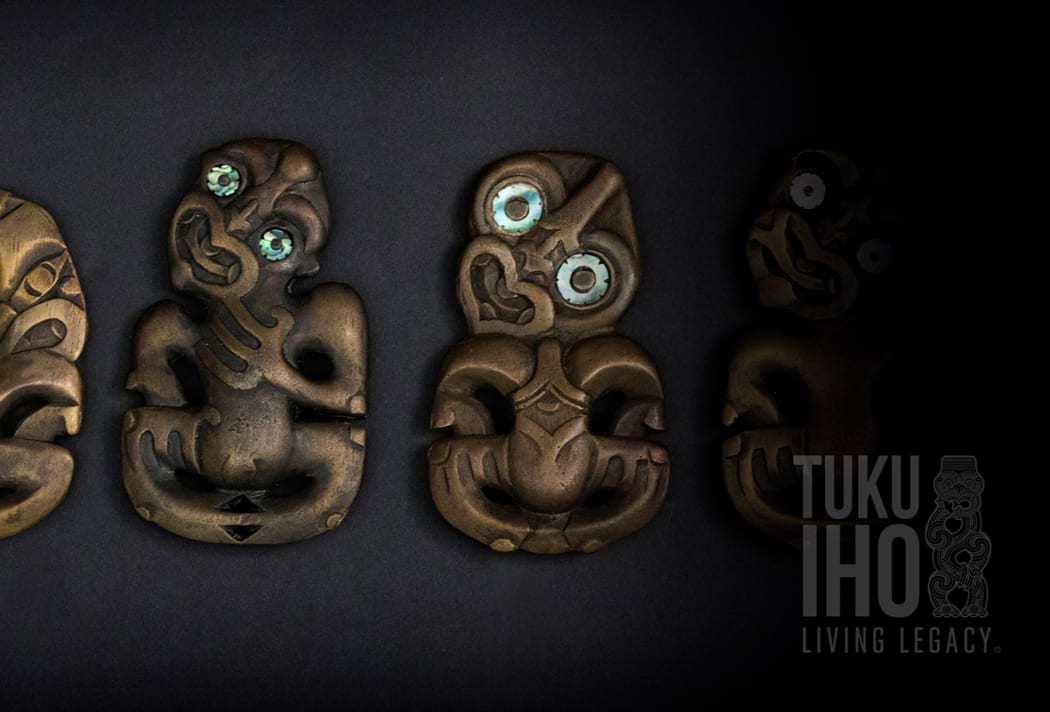
Tuku Iho exhibition will tour Japan in 2019. Photo: Supplied
The yet-to-be-named moko space is located opposite the carving school.
Bookings will be taken via the Te Puia website, but visitors may be able to receive a moko without a booking if time permits, Arekatera says.
“It offers something different and new for everybody. It was important for me to make sure that these guys…our tauira (students) get another opportunity to do this, to keep the art form alive.”
Both Arekatera and Jacob say they are comfortable giving moko to a wide range of cultures.
“It’s created an opportunity not only for Māori but for everyone to come in and walk away with some moko, to expose this process and expose the culture behind moko,” Arekatera says.
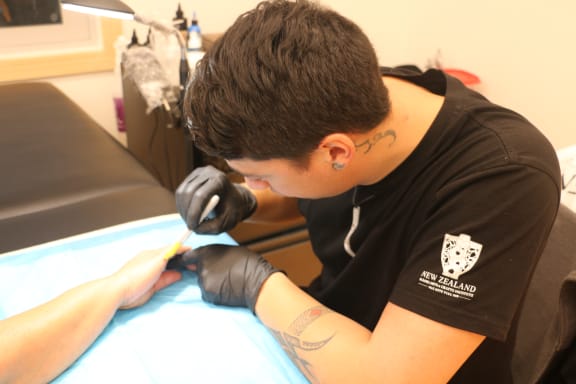
Jacob Tautari is one of the resident moko artists at the new space at NZMACI. Photo: RNZ/Justine Murray
The idea of giving moko to a wide range of cultures doesn’t phase Jacob.
Moko on non-Māori has come under intense debate recently when Pākeha woman Sally Anderson was both criticised and supported (largely on social media) for wearing moko kauae (facial moko).
Arekatera has given moko kauae to non-Māori and says the decision was based on how he felt about the person receiving it.
“It’s moko to me. I trained as a moko artist so my belief is all the knowledge that I have been given I am passing it over, whether you are Māori or non-Māori, it is moko… For me, though, the process I used is figuring out how I feel about that person, the reasons why they want it, the reasons why they think they should get it, especially non-Māori… The person that I did I found was right to me and as the artist, that’s why I did it.”
For Jacob, it's a question of how a non-Māori person interacts with Māori culture.
“For Pākeha to receive it on the face, I feel that they would have to live Te Ao Māori, they would have to be at the pa for them to receive it. I’d have to feel the connection.”

